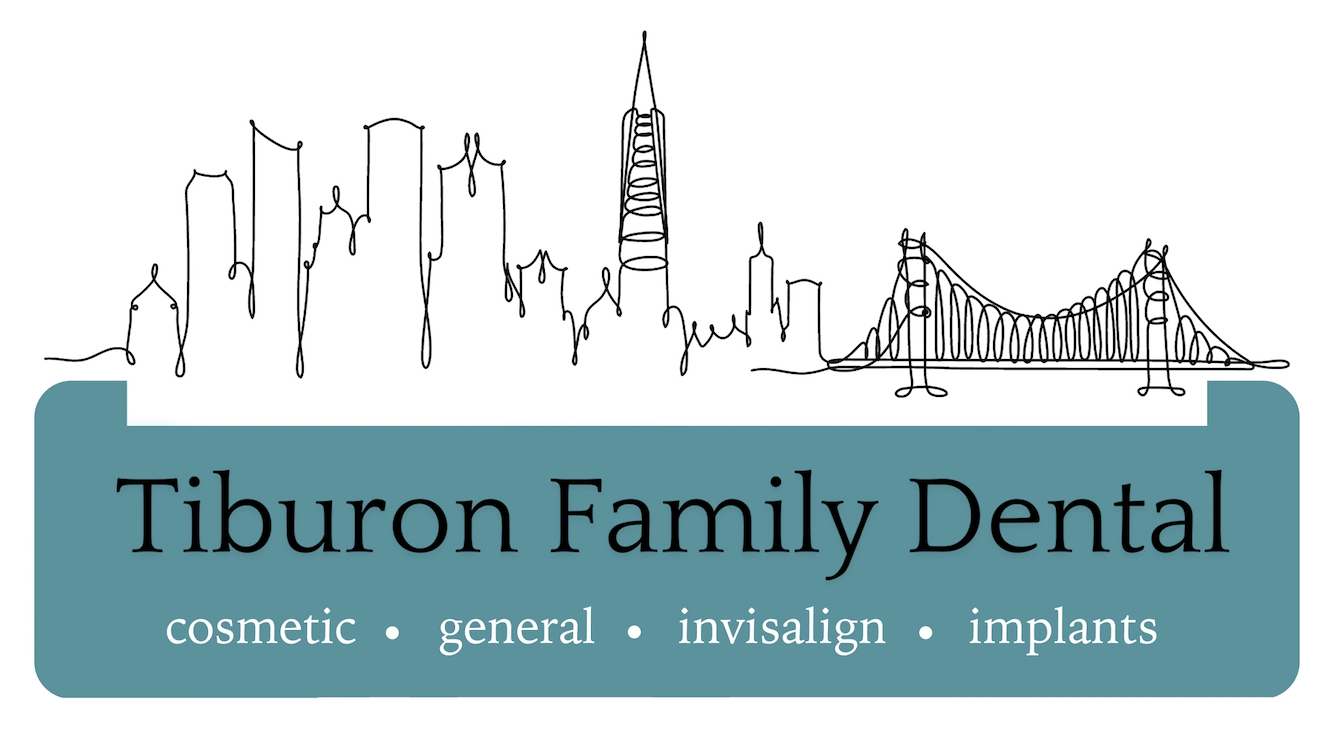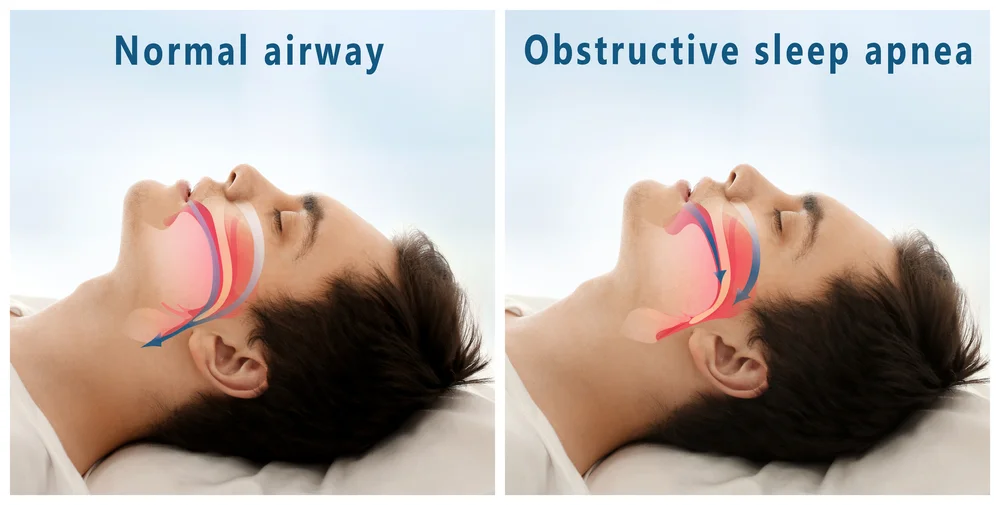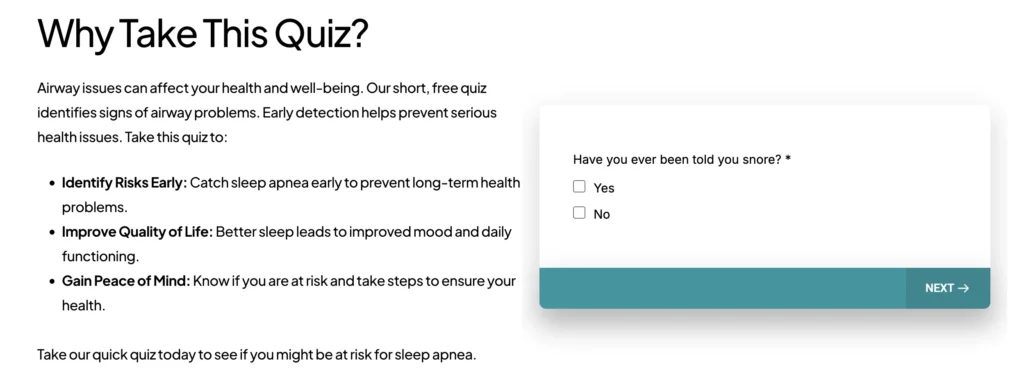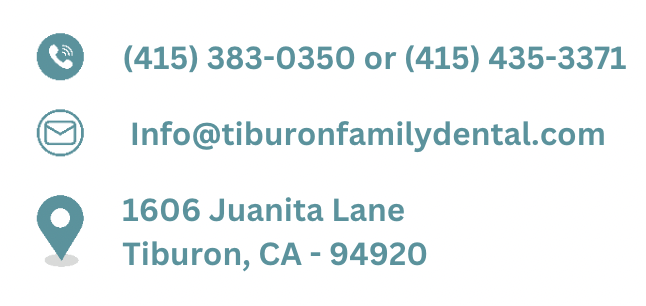Dr. Ever heard of a sleep apnea treatments in Mill Valley CA that really works? It’s seem harder than you might think, but we have some good news for you!
Imagine gasping for air multiple times a night. That’s what people with sleep apnea experience. In places like Tiburon, CA, many people struggle with it without even knowing they have it. Guess what, studies show that about 22 million Americans have this condition. Besides, 80% don’t get treatment.
The good news is treatments can help, they range from lifestyle changes to special devices. Let’s take a closer look at how sleep apnea treatments can help people breathe – and sleep – more easily.
Are You at Risk? Click The Image Below and Find Out!
What is Sleep Apnea?
You know what, sleep apnea makes you stop breathing during sleep. The term “apnea” means “breathless” in Greek, highlighting the condition’s main feature.
The thing is – sleep apnea has two main types. The most common one is obstructive sleep apnea (OSA), which happens when the throat muscles relax too much and block the airway. The other type is central sleep apnea (CSA), where the brain fails to control breathing during sleep.
It’s kinda like – when breathing stops, the body wakes you just enough to breathe again. This lifesaving response disrupts sleep, leading to poor rest. Over time, untreated sleep apnea can harm the heart, increasing the risk of heart disease and other health problems.
Who Does Sleep Apnea Affect?
Sleep apnea can impact people of all ages—from infants to older adults. However, certain groups are more prone to developing it:
Obstructive Sleep Apnea (OSA):
- More common in people assigned male at birth (AMAB) before age 50.
- After age 50, people assigned female at birth (AFAB) have similar rates.
- Higher likelihood in those with excess weight or obesity.
- More common among Black, Hispanic, and Asian populations.
Central Sleep Apnea (CSA):
- Primarily affects adults over 60 years old.
- Linked to opioid pain medication use.
- Common in people with heart conditions like atrial fibrillation or congestive heart failure.
- Can occur in those using CPAP for OSA, a condition called treatment-emergent central sleep apnea.
- Living at high altitudes can also trigger central apneas.
Though relatively uncommon, sleep apnea still affects up to 10% of people worldwide—often without their knowledge.
What Are the Symptoms of Sleep Apnea?
Now we come to symptoms – sleep apnea shows various symptoms, some easy to spot, others not. Here’s what to look for:
- Morning fatigue: People often wake up tired, even after a full night’s sleep.
- Daytime sleepiness: Drowsiness can occur during the day, even while driving.
- Loud snoring: Not everyone with sleep apnea snores, but it’s a key clue for those who do.
- Mood changes: Sleep apnea can lead to depression, irritability, and anxiety.
- Brain fog: It may impair memory, focus, and other mental functions.
- Frequent waking: Many wake up often, sometimes blaming it on heartburn or bathroom trips.
- Pauses in breathing: Partners might notice unusual breathing patterns.
- Cheyne-Stokes breathing: In central sleep apnea, breathing may become shallow, stop, then resume.
- Insomnia and night sweats: Restlessness and sweating at night are common.
- Choking or gasping: Many wake up feeling short of breath or choking.
- Morning headaches: Headaches upon waking are common due to low oxygen levels.
In fact, symptoms can be subtle. It’s good to notice patterns or ask loved ones about unusual behaviors at night.
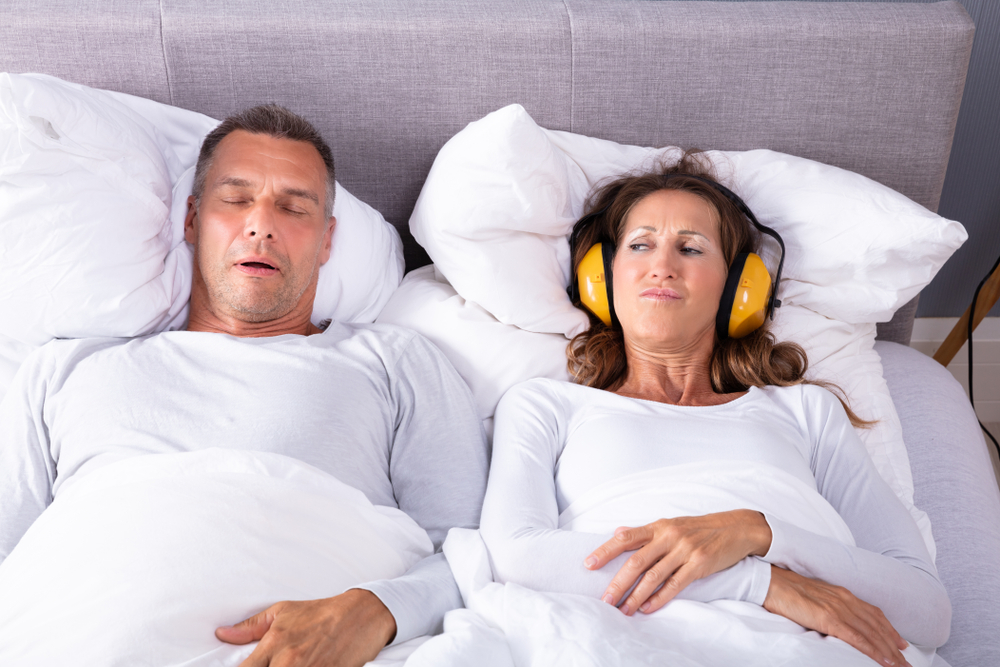 Sleep Apnea Treatments
Sleep Apnea Treatments
To be honest – sleep apnea treatments vary, each aimed at better nighttime breathing. Let’s look at how they work.
CPAP (Continuous Positive Airway Pressure)
The CPAP machine keeps airways open with pressurized air through a mask. This airflow creates positive pressure in the throat, preventing blockages.
It’s especially effective for obstructive sleep apnea (OSA), tackling airway collapse, its main cause. By keeping the airway open, CPAP prevents breathing interruptions and stabilizes oxygen levels at night. Now, here’s the deal – it needs nightly use for best results.
Mandibular Advancement Devices (MADs)
Mandibular advancement devices (MADs) are custom mouthguards that push the lower jaw forward. This keeps the airway open by preventing the tongue and soft tissues from blocking it during sleep. By repositioning the jaw, MADs increase airway size, reducing resistance and improving airflow.
If you ask me – MADs are ideal for mild to moderate obstructive sleep apnea. They are easier to use than CPAP machines, making them a better choice for those uncomfortable with CPAP. However, MADs need to be worn consistently to remain effective.
Inspire Sleep (Upper Airway Stimulation Therapy)
Inspire Sleep is a groundbreaking device that keeps airway muscles active during sleep. It detects your breaths. Then, it sends mild pulses to the hypoglossal nerve. This nerve controls the tongue and throat muscles. This prevents airway collapse, ensuring clear breathing.
The device is implanted with a simple procedure and activated by a remote at bedtime. It reduces the need for CPAP masks or mouthguards. So, it’s a great option for those with moderate to severe obstructive sleep apnea who can’t tolerate traditional treatments.
Surgical Interventions
Surgery can permanently treat sleep apnea by fixing airway blockages. The type of surgery depends on the blockage.
- Uvulopalatopharyngoplasty (UPPP) removes excess throat tissue to widen the airway.
- Genioglossus Advancement (GA) moves the lower jaw to prevent airway collapse.
- Maxillomandibular Advancement (MMA) shifts both jaws forward, increasing airway space.
These surgeries change the airway structure to improve airflow. However, they’re usually a last resort, needed only when other treatments fail. Surgery involves recovery time and risks.
Lifestyle Changes
Lifestyle changes target factors that block airways and cause breathing issues in sleep apnea. For example:
- Weight Loss: Excess fat around the neck can narrow the airway. Losing weight can help.
- Avoiding Alcohol: Alcohol relaxes throat muscles. This can cause airway collapse during sleep. To help maintain better airway control, reduce or avoid alcohol, especially before bed.
- Positional Therapy: Changing your sleep position can help. For example, try sleeping on your side. It can prevent your tongue and soft tissues from blocking the airway. Gravity affects the throat differently in different positions.
These lifestyle changes target causes, not the condition. They can help but may be insufficient for moderate to severe cases.
Vivos System
The Vivos System offers a unique, non-invasive way to treat sleep apnea. It addresses its root cause, airway obstruction, instead of just managing its symptoms. This custom oral appliance gradually expands the airway over 12 to 24 months.
The Vivos System helps by widening the dental arches and promoting proper jaw growth. It opens the airway and reduces the risk of tissue collapse during sleep. Unlike CPAP or other devices, the Vivos System requires no lifelong use. It creates lasting structural changes. So, it’s ideal for those seeking a long-term solution. Keep in mind – it can, over time, greatly reduce or end the need for other sleep apnea treatments.
Risks of Ignoring Sleep Apnea Symptoms
Let’s be real – if sleep apnea is not addressed, it can lead to a range of serious health complications. Here’s what can happen:
- Heart problems
- Chronic fatigue
- Increased risk of diabetes
- Cognitive impairment
- Mood disorders
- Weight gain
- Liver problems
- Decreased libido
- Accidents and injuries
Leaving sleep apnea untreated not only worsens its symptoms but can significantly affect overall health and quality of life. I’ve gotta say – seeking treatment is key to avoiding these long-term complications.
Act Now For Better Sleep
At Tiburon Family Dental, we know you want to sleep well, wake refreshed, and enjoy life more. To achieve this, you need effective sleep apnea treatments that cater to your unique needs. Untreated sleep apnea disrupts your sleep. Dr. Leeds totally understand – it leaves you exhausted and stressed all day.
We believe everyone deserves restful sleep and improved health. We know how frustrating it can be to feel drained, both physically and emotionally. That sounds tough but Dr. Blaine Leeds and the Tiburon Family Dental team in Mill Valley, CA, care deeply about your sleep apnea. They are committed to providing expert, compassionate care.
Here’s how we can help:
- Schedule a Consultation – Contact us to set up a convenient time for your first visit.
- Meet With Our Doctors – During your consultation, we’ll assess your symptoms and discuss your health concerns.
- Custom Treatment Plan – We’ll create a personalized plan to help you get the relief you need from sleep apnea.
Call Tiburon Family Dental today to schedule your consultation. It’s the first step toward better sleep and a healthier smile.
Schedule your FREE consultation today!
Tiburon Family Dental
(415) 383-0350
(415) 435-3371
Get Directions Here
Tiburon Location:
1606 Juanita Lane
Tiburon, CA – 94920
Mill Valley Location:
7 North Knoll Road, Suite 7
Mill Valley, CA 94941
FAQs
How effective is UPPP surgery for sleep apnea?
UPPP surgery removes throat tissue to treat obstructive sleep apnea. Its success varies. Some patients still need CPAP therapy.
What is the genioglossus in sleep apnea?
The genioglossus is a tongue muscle that keeps airways open during sleep. In sleep apnea, it may fail, causing breathing issues.
Is it Possible to Live a Long Life with Sleep Apnea?
Yes, but untreated sleep apnea raises the risk of heart disease, stroke, and diabetes. Treatment is crucial for better health.
Can I fix sleep apnea at home?
Lifestyle changes like losing weight, sleeping on your side, and avoiding alcohol can help. But, CPAP therapy or dental devices are often needed.
Is sleep apnea ever cured?
Sleep apnea isn’t usually “cured,” but it can be managed with CPAP therapy, surgery, or oral appliances. Lifestyle changes can also help.

